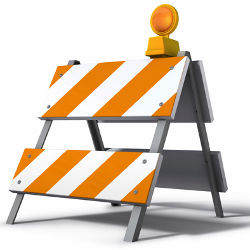
Computer scientists are wrestling to tame the glut of online data, which is overwhelming both individuals and companies (http://cacm.acm.org/news/46847). For some users the answer starts with restrictions (http://calacanis.com/2007/10/03/web-3-0-the-official-definition/), but that suggestion has been met with predictable, polite opposition grounded in the Web’s freewheeling openness (http://www.demo.com/community/?q=node/9178).
It’s not difficult to find evidence of an overconnected world, and there’s a tendency to want to rein it in. More professors are banning distracting laptops from university classrooms (http://cacm.acm.org/news/79243). Emergency medical technicians now risk additional life-threatening danger when checking dashboard computers and navigational systems for directions, vital medical information, even baseball scores, while racing patients to the hospital at top speeds. Will "regulators, legislators and safety advocates seek to limit the use of gadgets by most drivers"? (http://www.nytimes.com/2010/03/11/technology/11distracted.html?pagewanted=1).Physicians fear losing influence over patients who read online testimonials and incorrect data "perceived as factual" on Web sites not "fully under the doctor’s control" (www.physorg.com/news188672089.html). In addition, the Simon Wiesenthal Center recently released its 2010 Digital Terrorism and Hate report, identifying the Web’s most dangerous and offensive content (http://www.foxnews.com/slideshow/scitech/2010/03/15/world-wide-web-hate).
Restricting access and content is a tempting solution, but restrictions won’t end any of this. Connectivity is only the enabler, not the cause. The Internet and mobile communications give some people new ways to misbehave, and examples abound. Legislated penalties don’t work (http://recombu.com/news/london-drivers-love-to-chat-legally-or-otherwise_M11236.html). That texting driver in the next lane is not going away soon, law or no law.
Salvation may come from computer science. Researchers are exploring innovations that will make voluminous online data more manageable, for example, by making connections between different data sets (http://cacm.acm.org/news/80562). These and other methods will give users new ways to sift through, sort, interrogate, and organize online information.



Join the Discussion (0)
Become a Member or Sign In to Post a Comment